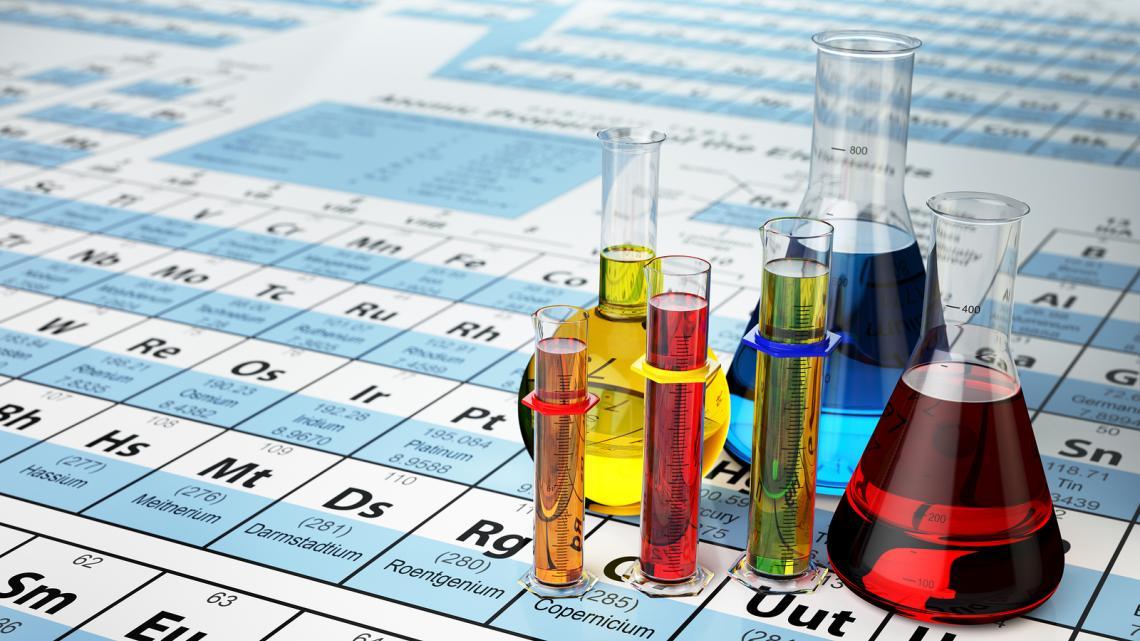
The first step towards the formation of any exam is to gain knowledge of its syllabus. The syllabus of Chemistry is pretty vast and the applicants are suggested to cover the whole syllabus without skipping anything as all the topics are related from a competitive exam point of view. The knowledge related to the subject of Chemistry has experienced major renovations over the years and the aspirants must check the latest syllabus for the same. This article provides the applicants the complete and latest details related to the Chemistry Class 11 CBSE Syllabus 2021-2022.
Unit-wise Chemistry Class 11 CBSE Syllabus 2021
The class 11 Chemistry subject syllabus consists of numerous major topics divided into 14 separate units. Candidates can check all these units and the topics that they cover from below.
Unit I: Some Basic Concepts of Chemistry 11th Class (12 Periods)
Meaning and Scope of Chemistry, Laws of Chemical Combination, Dalton’s Atomic Theory, Atoms and Molecules, Concept of Elements, Atomic and Molecular Masses, Nature of Matter, Mole Concept and Molar Mass, Empirical and Molecular Formula, Percentage Composition, Chemical Reactions, Stoichiometry and Calculations Based On It
Unit II: Structure of Atom 11th Class (14 Periods)
Bohr’s Model and Its Boundaries, Dual Nature of Matter and Light, Shells and Sub-Shells, Quantum Numbers, Heisenberg Uncertainty Principle, De Broglie’s Relationship, Electronic Configuration of Atoms, Concept of Orbital, Shapes of s, p and d Orbital, Rules For Filling Electrons In Orbital- Aufbau Principle, Pauli’s Exclusion Principle, and Hund’s Rule, Stability of Half-Filled and Completely-Filled Orbital
Unit III: Classification of Elements and Periodicity in Properties 11th Class (8 Periods)
Modern Periodic Law, Present Form of Periodic Table, Periodic Trends In Properties of Elements-Atomic Radii, Valency, Electro-negativity, Inert Gas Radii, Electron Gain Enthalpy, Ionic Radii, Ionization Enthalpy, Nomenclature of Elements With Atomic Number Above 100
Unit IV: Chemical Bonding and Molecular structure 11th Class (14 Periods)
Ionic Bond, Covalent Bond, Valence Electrons, Bond Parameters, Polar Character of Covalent Bond, Lewis Structure, Covalent Character of Ionic Bond, Valence Bond Theory, Concept of Hybridization Involving s, Geometry of Covalent Molecules, p and d-Orbital, Shapes of Some Simple Molecules, Molecular Orbital Theory of Homo-Nuclear Diatomic Molecules, VSEPR Theory, Hydrogen Bond
Unit V: States of Matter: Gases and Liquids 11th Class (12 Periods)
The states of Matter, Types of Bonding, Melting and Boiling Points, Role of Gas Laws In Elucidating The Concept of The Molecule, Avogadro’s Law, Boyle’s Law, Intermolecular Interactions, Charles Law, Gay-Lussac’s Law, Avogadro’s Number, Ideal Gas Equation, Empirical Derivation of Gas Equation, Ideal Behaviour, Deviation From Ideal Behaviour, Kinetic Energy and Molecular Speeds Liquid State, Liquefaction of Gases, Critical Temperature, Vapour Pressure, Viscosity, and Surface Tension
Unit VI: Chemical Thermodynamics 11th Class (16 Periods)
Concepts of System and Types of Systems, Extensive and Intensive Properties, State Functions, Work, Surroundings, Heat, Energy, Laws of Thermodynamics, and Dilution, Heat Capacity and Specific Heat, Internal Energy and Enthalpy, Measurement of ∆U and ∆H, Hess’s Law of Constant Heat Summation, Formation, Atomization, Sublimation, Combustion, Phase Transition, Ionization, Enthalpy of Bond Dissociation, Entropy As A State Function, Gibb’s Energy Change For Spontaneous and Non-Spontaneous Processes, Criteria For Equilibrium
Unit VII: Equilibrium 11th Class (14 Periods)
Dynamic Nature of Equilibrium, Equilibrium In Physical and Chemical Processes, Factors Affecting Equilibrium- LeChatelier’s Principle, Law of Mass Action, Ionic Equilibrium- Ionization of Acids and Bases, Ionization of Poly Basic Acids, Equilibrium Constant, Strong and Weak Electrolytes, Acid Strength, Solubility Product, Degree of Ionization, Concept of pH, Henderson Equation, Hydrolysis of Salts, Common Ion Effect, Buffer Solution
Unit VIII: Redox Reactions 11th Class (6 Periods)
Concept of Oxidation and Reduction, Balancing Redox Reactions, Oxidation Number, Redox Reactions, Loss and Gain of Electrons and Change In Oxidation Number, Redox Reactions Applications
Unit IX: Hydrogen 11th Class (8 Periods)
Position of Hydrogen In Periodic Table, Occurrence, Isotopes, Preparation, Hydrides-Ionic Covalent and Interstitial, Physical and Chemical Properties of Water, Properties, and Uses of Hydrogen, Heavy Water, Hydrogen Peroxide-Preparation, Structure, Reactions and Hydrogen As A Fuel
Unit X: s-Block Elements (Alkali and Alkaline Earth Metals) 11th Class (10 Periods)
General Introduction, Occurrence, Anomalous Properties of The First Element of Each Group, Trends In The Variation of Properties, Diagonal Relationship, Uses, Electronic Configuration Trends In Chemical Reactivity With Oxygen, Water, Hydrogen and Halogens, Preparation and Properties of Some Important Compounds, Calcium Oxide and Calcium Carbonate & Their Industrial Uses, Biological Importance of Magnesium and Calcium
Also read about:
THESE PEARL JEWELRY TO ENHANCE YOUR TEMPERAMENT
Ultimate guide to Plenum Cables Types and Specifications
3 Tips for Choosing the Right Wholesale Baby Clothes Size








